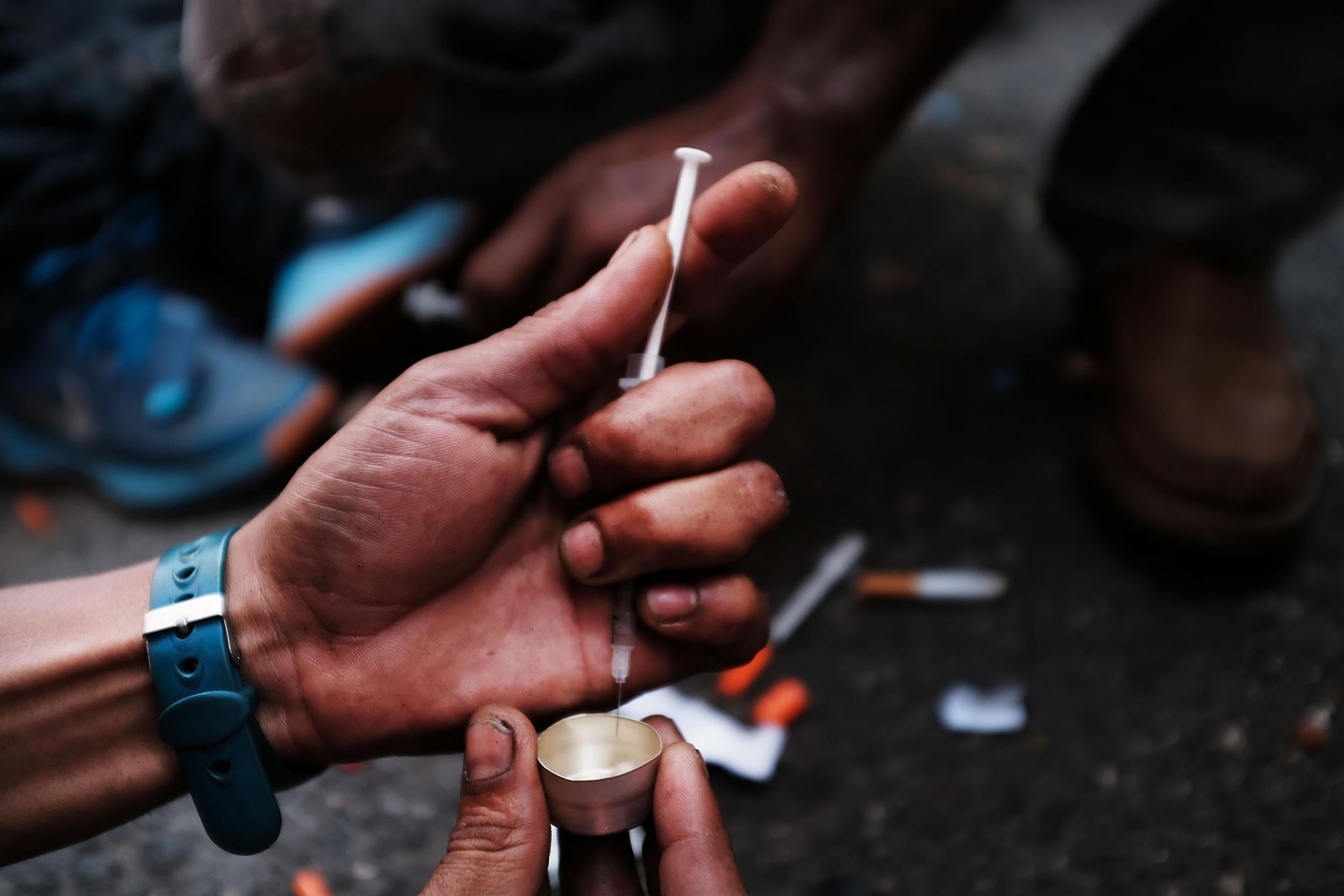Opioid crisis: What is it and why is Trump declaring a public health emergency?
Mr Trump convened a commission that has been considering how to address the opioid crisis in America

President Donald Trump is announcing a public health emergency to combat the opioid crisis in America, after months of deliberation by the commission he brought together to find a solution to the deadly problem plaguing the country.
The classification marks increased concern on behalf of the US government for an epidemic that has left hundreds of thousands of people across the United States dead. The crisis has shown no indicator of slowing down lately, as rampant prescription painkiller abuse and prescription has led a significant number of Americans into a downward spiral that often leads to heroin addiction, or addiction to stronger opioids.
America’s opioid crisis is no new problem for the United States — the issue has been snowballing for roughly two decades — but is now responsible for more deaths than some other very deadly killers in America. And the problem keeps getting worse.
Here’s what you need to know.
How bad is the opioid crisis in America?
Last year, opioid deaths reached a record high, topping the previous record set… just one year prior.
Approximately 64,000 people were killed by drug overdoses in America in 2016, with opioids leading the way. That leading killer group includes synthetic and illegally produced opioids (like the drug fentanyl), heroin, and also prescription painkillers (like OxyContin and Percocet), according to the Centre for Disease Control and Prevention (CDC).
Opioid deaths topped deaths for the records several well-known causes of death in the US, like car crashes, guns, and HIV/AIDs deaths. All together, opioids have killed more people in America than the combined casualty rates from the Iraq and Vietnam Wars combined.
If the current rate of deaths continues, as many as 650,000 people are expected to die over the next ten years as a result of opioid overdoses, a figure that is larger than most large American cities.
How did we get here?
Opioids became a go-to prescription for doctors in the 1990s, as physicians became increasingly aware of the impact of pain on patients. As doctors grappled with how to treat pain, pharmaceutical companies began pushing prescription drug remedies, leading to more and more prescriptions of the highly addictive substances.
At the same time, drug traffickers were able to capitalise on the rising prescription painkiller rates to offer less expensive, and stronger, alternatives once prescriptions ran out — like heroin and fentanyl, a high addictive and highly potent opioid pain reliever.
Doctors have over-prescribed painkillers at a dangerous rate over the past two daces. For instance, routine wisdom teeth surgery can be accompanied by prescriptions covering several weeks even though pain for that procedure generally subsides within one week of the surgery.
Did this happen in other countries?
Not really. While other countries do prescribe opioids for pain relief, they tend to do so at a more measured rate. There are roughly 50,000 daily prescribed daily doses of opioids in America per one million people. The second most prescribed nation is Canada, which prescribes just over 30,000 doses per day per million people.
“Consider the amount of standard daily doses of opioids consumed in Japan. And then double it. And then double it again. And then double it again. And then double it again. And then double it a fifth time. That would make Japan No. 2 in the world, behind the United States,” Stanford drug policy expert Keith Humphreys said earlier this year at Stanford’s 2017 Medical X conference.
To put the prescription rate in the US into perspective: There were enough pills prescribed in 2015 to medicate every single American around the clock for three weeks, according to the CDC.
Is treatment an option and available?
Treatment is an option, but it is rarely used in America. The surgeon general’s report for 2016 found that just 10 per cent of people in the US struggling with drug addiction in the US were getting specialty treatment for their disorders.
That low treatment rate is the result of a variety of factors. For some in, especially, poor and rural areas of the country there simply aren’t facilities equipped to treat complex drug addiction issues.
For others physical access may not be a problem, but access to funds or insurance to treat their addiction can be a major barrier in the country.
What has Mr Trump done and what does a “public health emergency” mean?
The President campaigned in 2016 on the promise that he would fix the opioid addiction problem in America, and created a commission on opioid addiction in May.
The commission initially recommended declaring a more sweeping Stafford Act emergency, but the administration says that an emergency like that — usually reserved for after a terror attack or natural disaster — wouldn’t offer the correct authority to address the crisis.
Instead, Mr Trump is instructing the acting director of the Department of Health and Human Services to declare the public health emergency. That emergency is much narrower than a Stafford Act emergency declaration, and won’t free up additional federal funding for the issue.
Join our commenting forum
Join thought-provoking conversations, follow other Independent readers and see their replies
Comments